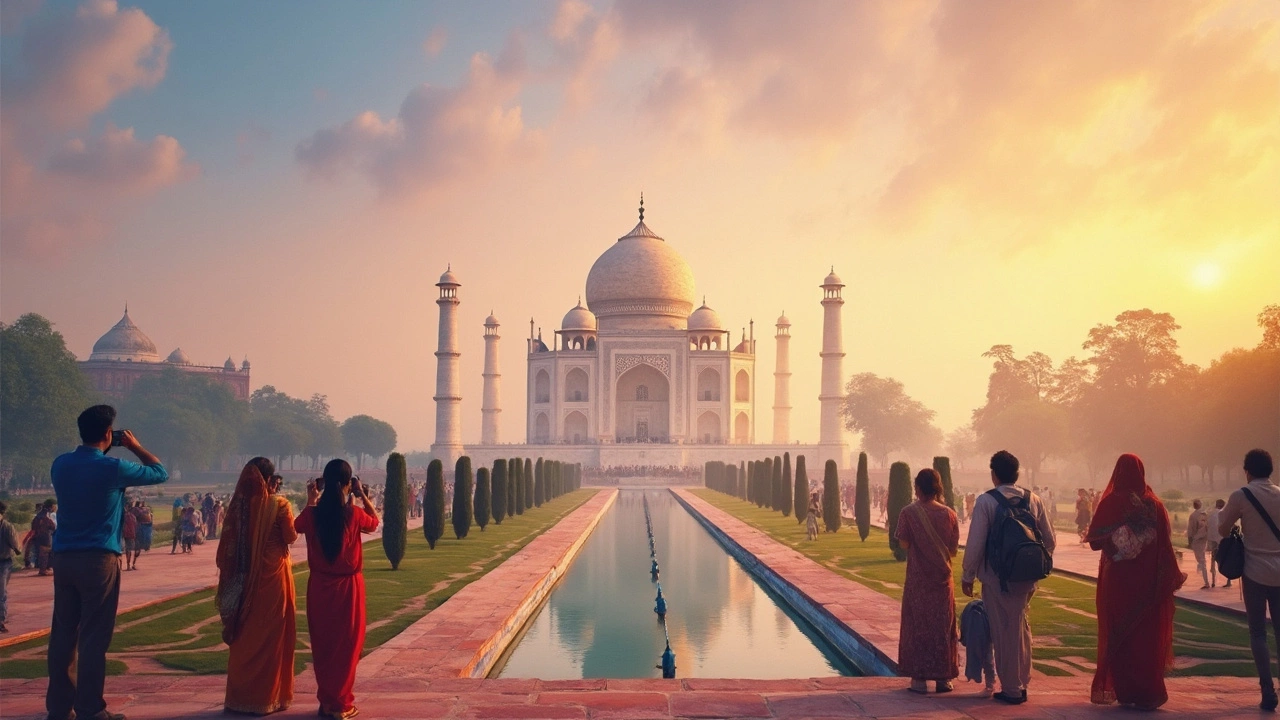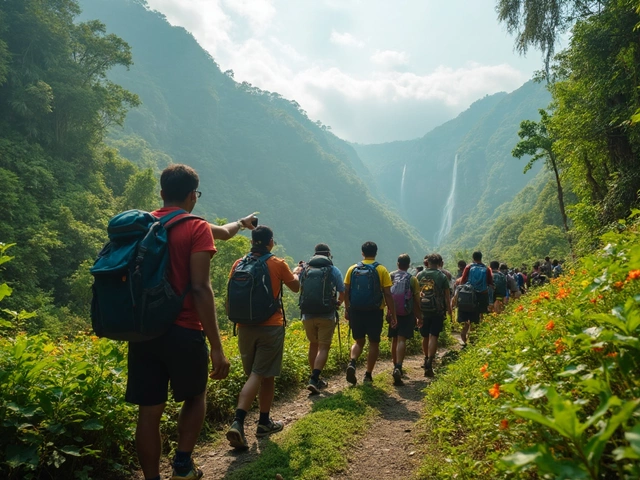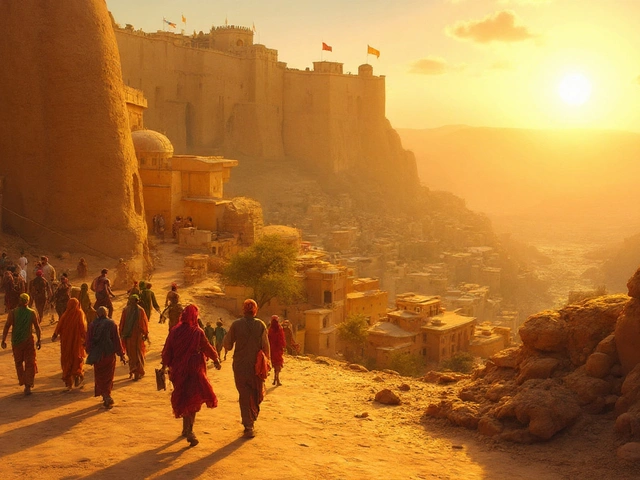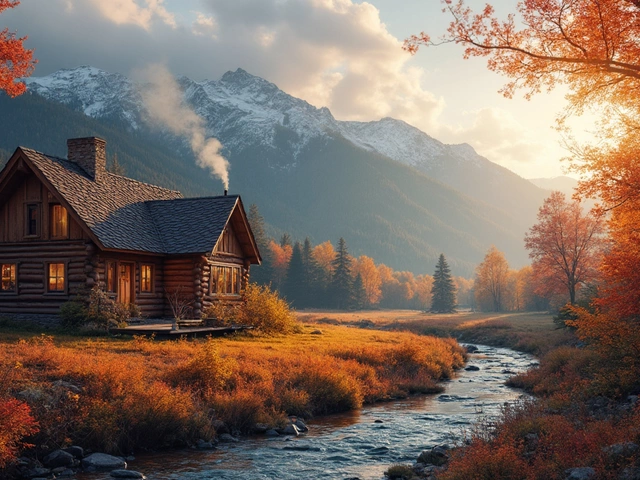No other place in North India has captured the world’s imagination quite like the Taj Mahal. It draws travelers from every corner of the planet, and for good reason. You don’t need a history degree or a fancy camera to appreciate what you find here—it just hits differently in person.
If you’re planning a trip, it helps to know what actually makes this marble wonder the top tourist pick and how to experience it without getting stuck in endless crowds or tourist traps. Don’t just show up and hope for the best; a little prep goes a long way.
This spot packs more surprises than you might expect. There are certain hours when the Taj Mahal looks almost unreal, little-known shortcuts to beat the queues, and even some rules that might catch you off guard (leave your tripods and snacks behind—they won’t make it past security). Want an even better trip? Most folks miss out on the nearby side streets serving up the best, most authentic chaats and sweets, just steps away from the main gate.
- Why the Taj Mahal Gets the Top Spot
- What Makes the Taj Mahal Different
- Plan the Perfect Visit
- Nearby Hidden Gems to Check Out
Why the Taj Mahal Gets the Top Spot
The No 1 tourist place in India—that's a bold title, but the Taj Mahal wears it easily. Millions show up every year, and it's not just about snapping an Instagram photo. People walk away talking about the feeling they got from seeing it up close. UNESCO called it a World Heritage Site all the way back in 1983, which is no small deal. Plus, it pops up on just about every "world’s wonders" list out there.
What sets the Taj apart is the story behind it. It’s more than just pretty marble; it's a symbol of love. Emperor Shah Jahan had it built in the 1600s for his wife, Mumtaz Mahal. He wasn't messing around, either—it took more than 20,000 workers and 22 years to pull it off. Everything is thought out to the tiniest detail, down to the way different stones catch the sunlight at different times of day.
Here’s a quick look at what makes it so unique:
- The central dome is massive—over 35 meters high!
- You get perfect symmetry everywhere you look. If you split the building down the middle, either half matches the other.
- The gardens are laid out in the classic Mughal style, meant to make you feel relaxed the moment you step in.
- The calligraphy on the main gateway isn't just for decoration—each letter actually gets bigger as you look up, so it looks even from the ground.
Check out these wild numbers from recent years:
| Year | Estimated Visitors |
|---|---|
| 2017 | 7.8 million |
| 2019 | 6.9 million |
| 2023 | Almost 5 million (post-pandemic bounce back) |
The Taj Mahal isn’t just popular with international travelers. Indians themselves keep it at the top of their must-see list, whether it’s for a school trip, a romantic getaway, or a family vacation. No matter when you visit, there's always a good mix of foreign tourists and local folks soaking in the same view. That’s tough to beat.
What Makes the Taj Mahal Different
The Taj Mahal doesn’t just top the list of north India tourism spots because it’s famous. It’s got a mix of history, design, and pure wow-factor you won’t find anywhere else. People call it the ultimate symbol of love, but that barely scratches the surface.
It was built in 1653 by Mughal emperor Shah Jahan for his wife Mumtaz Mahal. The thing is, this place is way more than just a fancy tomb. It’s a showcase of the best Mughal architecture—think Persian, Turkish, and Indian styles all rolled into one.
One thing that sets the No 1 tourist place in India apart is its perfect symmetry. Both the gardens and the main building line up “just right,” which is pretty wild considering it was built almost 400 years ago, long before modern tech. Step up to that main gate, and you’ll spot the Taj framed perfectly above the busy crowds. If you’re up for it, take a walk to the back—many first-timers don’t realize there’s a view of the Yamuna River from there that shows the palace in a totally different light.
- The marble actually changes color. Early mornings, it glows pinkish; by mid-day, it’s bright white; at sunset, the domes take on a golden tint. Try coming at sunrise to skip the heavy crowds and see the colors pop.
- Every bit of the white marble is inlaid with tiny gems—over 28 types, including jade, lapis, and turquoise. Over 20,000 workers spent years getting every detail right.
- Unbelievably, there are no concrete foundations. The whole thing sits on a big base of timber, which has survived because the ground under the Taj stays moist from the river—a unique trick that’s kept it standing for centuries.
If you’re big on world rankings, check this out:
| Fact | Details |
|---|---|
| UNESCO World Heritage Site | Yes, designated in 1983 |
| Annual Visitors (pre-pandemic) | Over 7 million |
| Global Recognition | Named among the “New 7 Wonders of the World” |
Beyond the looks, what drives crowds is the feel of the place. It’s one of the rare tourist sites where the hype doesn’t let you down. You really won’t mistake it for any other spot in north India tourism.
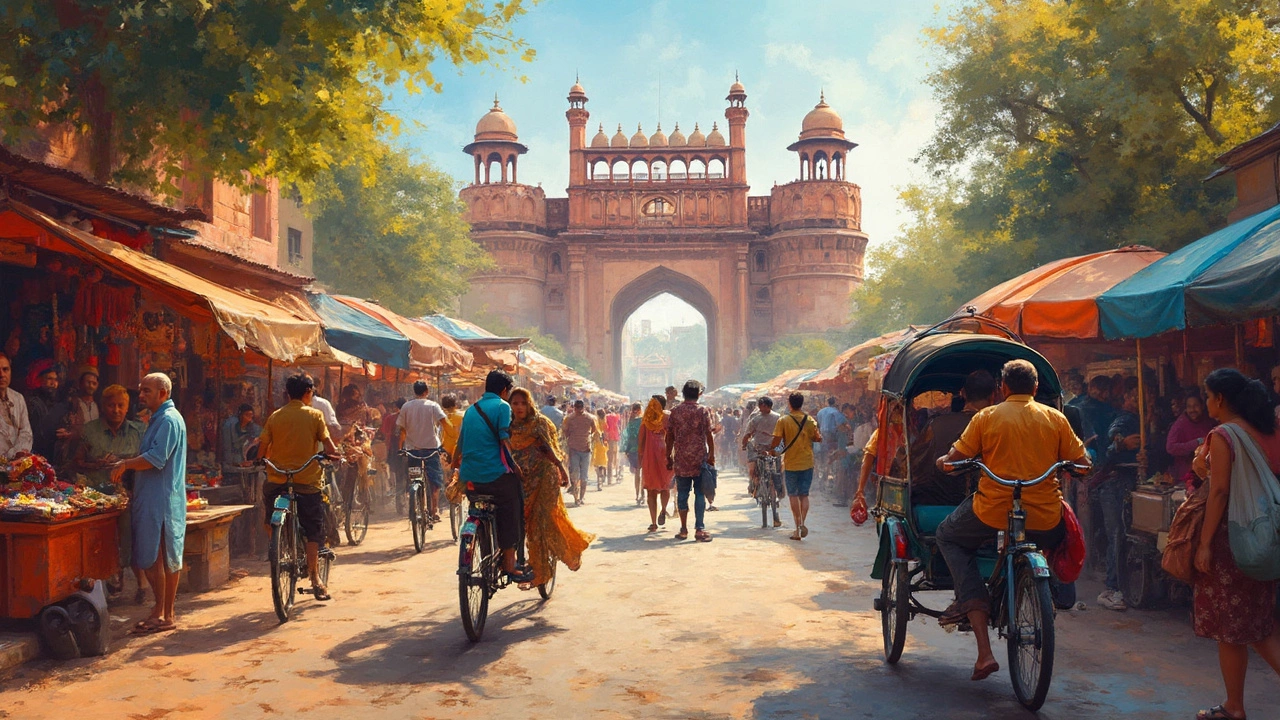
Plan the Perfect Visit
If you want to get the best out of your trip to the No 1 tourist place in India, you’ll need more than a ticket and a camera. The Taj Mahal is open every day except Fridays, from sunrise to sunset. Most visitors crowd in after 9 a.m., but if you arrive right when the gates open (usually around 6 a.m.), you’ll dodge the bulk of the crowds and catch the marble glowing in the soft morning light. It really pays off for photos and a calmer vibe.
Skip the long lines for tickets by booking your entry online through the official Archaeological Survey of India website. You’ll save time and stress, especially during the holiday and wedding seasons when it’s packed. The entry fee for foreigners is clearly marked—₹1,100 for adults—and Indian citizens pay much less. Remember, there’s a special extra fee if you want to actually go inside the main mausoleum; most people don’t realize it until they reach the door.
The best way to tackle the site is simple:
- Wear comfy shoes—no heels or new kicks, the grounds are bigger than they look.
- Bring only the basics: phone, passport, small wallet. Big bags, food, and extra gadgets aren’t allowed.
- Grab a bottle of water right before you enter; once inside, options are limited and more expensive.
- If you want one of those classic bench photos, head there first. The line gets long fast.
Night viewing is another trick most travelers skip. For five nights each month around a full moon (not Fridays or public holidays), you can book a special entry and see the Taj Mahal gleam under moonlight. It’s limited to 400 people per night and tickets sell out quick—so plan ahead.
| Entry Type | Price (INR) |
|---|---|
| Foreign Tourist | 1,100 |
| SAARC/BIMSTEC Country Visitor | 540 |
| Indian Citizen | 50 |
| Mausoleum Access Fee | 200 |
Watch out for local guides—some are fantastic, but some are just after a quick buck. Ask for the official badge before you hand over any cash. Don’t forget, Monday and Thursday mornings tend to be quieter since local schools are in session and weekend crowds haven’t hit yet. For families, strollers are allowed but keep them light; uneven walkways make big wheels a hassle. The dress code doesn’t have strict rules, but it’s smart to wear something that covers your knees and shoulders to respect local customs and save yourself from the sun.
Nearby Hidden Gems to Check Out
Most people rush straight in and out of the No 1 tourist place in India without realizing the area around the Taj Mahal packs a punch too. Skip the souvenir stalls right outside and dig a little deeper—Agra has hidden spots that are totally worth your time.
Mehtab Bagh sits just across the Yamuna River from the Taj. It's a quiet garden where you can see the full silhouette of the Taj Mahal, especially stunning at sunset. Not many regular tour buses stop here, so you might snag that perfect photo without twenty selfie sticks in your shot.
If you’re into history, check out Agra Fort. Locals call it the "Red Fort of Agra," and it’s a massive structure built in the 16th century—UNESCO says it’s one of the most important forts in India. You’ll spot a mix of Hindu and Islamic styles and even catch a unique view of the Taj from its towers. Bonus tip: The fort is just 2.5 km from the Taj, so you can squeeze it in the same morning.
Next, you should visit Itimad-ud-Daulah’s Tomb, known as the "Baby Taj." It’s smaller, less crowded, and locals say its carvings and inlays are even more detailed. This spot is ideal if you want to see what inspired the famous Taj Mahal design.
- Sadar Bazaar: Looking for snacks or little souvenirs? This market area is a favorite for spicy street food and quirky shops. Try the petha (a super sweet local treat).
- Korai Village: About 25 km from Agra, this spot gives you a peek into rural life. You can watch pottery making and taste home-cooked food. Perfect for a real break from the tourist crowds.
If you love unusual stats, Agra has over 200 old heritage sites, but less than 15% see regular tourist traffic. That means plenty are peaceful and untouched by big tour groups.
One tip: If you’re visiting the Taj Mahal in the early morning, head to one of these hidden gems in the afternoon to balance out the crowds and heat.
